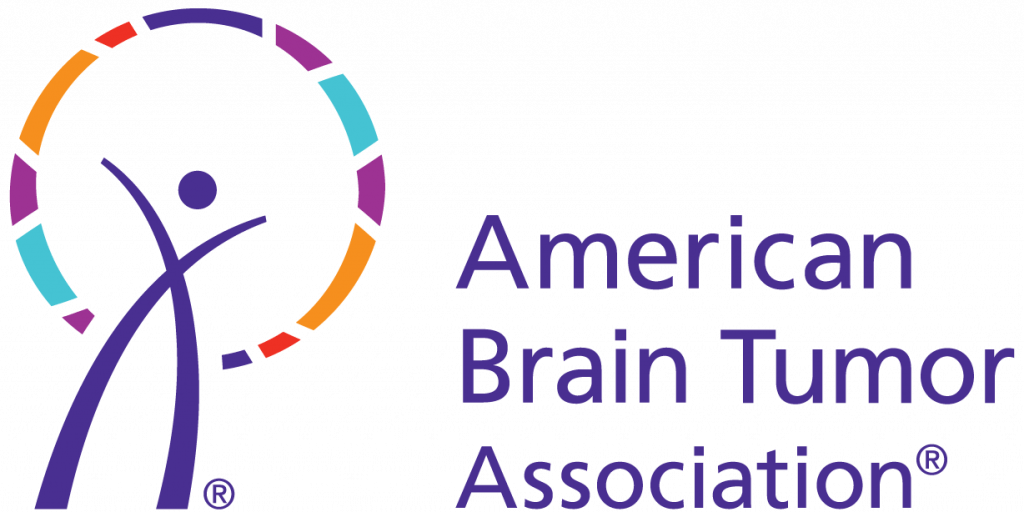Brain Tumor FAQs
If you’ve got a brain tumor, you’ve got questions. Here are answers to some of the most frequently-asked questions. If you need immediate assistance, please call our CareLine at 800-886-2282. We are here to help.
A brain tumor is a growth of abnormal cells that have formed in the brain. Some brain tumors are malignant (cancerous), while others are not (non-malignant, non-cancerous or benign). A brain tumor can form in the brain or other parts of the central nervous system (CNS), such as the spine or cranial nerves. The brain plays a central role in the control of most bodily functions, including awareness, movements, sensations, thoughts, speech, and memory. A tumor can affect the brain’s ability to work properly and adequately perform such functions.
A brain tumor is a growth of abnormal cells that have formed in the brain. Some brain tumors are malignant (cancerous), while others are not (non-malignant, non-cancerous or benign).
A brain tumor can form in the brain or other parts of the central nervous system (CNS), such as the spine or cranial nerves. The brain plays a central role in the control of most bodily functions, including awareness, movements, sensations, thoughts, speech, and memory. A tumor can affect the brain’s ability to work properly and adequately perform such functions.
Tumor grade has long been a way to define the aggressiveness of a tumor, particularly for malignant brain tumors such as glioma but also for non-malignant (benign) brain tumors including meningioma.
Traditionally, tumors have been classified as grade 1 to 4 based on histology (cells as viewed under a microscope) and molecular markers. Grade 1 tumors occur primarily in children and represent a type separate from grade 2-4 (seen primarily in adults). Grade 2 tumors are considered low grade, but some can be aggressive. Grade 3 and 4 tumors are defined as high grade.
Not all brain tumors are the same. Some tumors have differences in the genetic or molecular makeup of the cells. These differences are called molecular markers, or biomarkers. Molecular markers are becoming increasingly important for brain tumor diagnosis and treatment. For example, some molecular markers help determine how aggressive a tumor may be. Others determine how responsive a tumor will be to treatment.
Some common molecular markers include the following:
- IDH1 and IDH2
- MGMT
- 1p/19q co-deletion
- BRAF
- EGFR
- TP53
- ATRX
- TERT
- PTEN
- NTRK
- FGFR
Learn more on ABTA’s Types of Biomarkers page.
In 2016, the World Health Organization (WHO) included two molecular markers into the CNS tumor classification system that improved accuracy of glioma diagnosis.1 In 2021 WHO again updated CNS tumor classification, incorporating new knowledge gained from additional molecular markers and new diagnostic techniques.2 Tumors are now listed as “CNS grade 1-4” with presence or absence of IDH mutation, a key factor in glioma classification.
The brain and spinal cord together form the central nervous system (CNS). The brain is a complex organ made up of nerves and connective tissue. Nerves in the brain and spinal cord transmit messages throughout the body. The CNS directs and regulates all of the body’s functions.
The CNS is the core of our existence. It controls:
> Personality: thoughts, memory, intelligence, speech, understanding and emotions
> Senses: vision, hearing, taste, smell and touch
> Basic body functions: breathing, heartbeat and blood pressure
> How we function in our environment: movement, balance and coordination
The brain is made up of multiple parts, and each part of the brain is responsible for different body functions. Therefore, brain tumor symptoms, and potential treatment options, depend a great deal on where the tumor is located.
Learning about the normal workings of the brain and spine will help you understand the symptoms of brain tumors, how they are diagnosed and how they are treated.
Major parts of the brain: There are three major parts of the brain.
> Cerebrum: uses information from senses to tell our body how to respond. It controls reading, thinking, learning, movement, speech, vision, personality and emotions.
> Cerebellum: controls balance for standing, walking and other motion.
> Brain stem: connects the brain with the spinal cord and controls basic body functions such as breathing, sleeping, body temperature and blood pressure.
Lobes of the brain
Different lobes of the brain control different functions. The frontal lobe of the brain helps you think and reason. The temporal lobe contains the neural pathways for hearing and vision, as well as behavior and emotions. Having a tumor, or treatment, in one of these lobes could affect the lobe’s specific functions. Additionally, since the brain has areas that connect, it is possible for a brain tumor to impact a function of the brain where the tumor is not specifically located.
Other common brain tumor locations include the meninges (a layer of tissue that covers the brain and spinal cord), skull base (the bottom of the skull), spinal cord, pituitary tumor, and cranial nerves.
Brain tumors are reported in people of all ages, races, ethnicities, and genders. Over 1.3 million Americans are living with a primary or secondary/metastatic brain tumor today.3 Primary tumors originate in the brain, and the most common types are meningiomas, pituitary tumors, and gliomas. Metastatic, or secondary brain tumors arise from outside the brain in another organ such as the breast or lung and spread to the brain. These are the most common brain tumors.4
Unless otherwise specified, the follow statistics come from the Central Brain Tumor Registry of the United States Annual Report4:
- Approximately 90,000 people are diagnosed with a primary brain tumor every year.
- Brain and other CNS tumors are the fifth most common cancer.
- Over 1 million people are living with a diagnosis of a primary brain tumor.
- There are more than 100 different types of primary brain and CNS tumors.
- Nearly one-third (27.9 percent) of brain and central nervous system (CNS) tumors are malignant.
- Brain and CNS tumors are the most common cancer diagnosed in children aged 0-14.
- More than 28,000 children in the United States are currently diagnosed with a brain tumor.
- Approximately 3,400 children (aged 0-14) are diagnosed with a primary brain tumor each year.
- Approximately 12,800 adolescents and young adults (aged 15-39) are diagnosed with a primary brain tumor each year.
- The incidence rate for brain and CNS tumors is highest among those aged 85 years and older.
- Each year, approximately 17,200 people die from a malignant brain tumor. Survival after diagnosis with a primary brain tumor varies significantly by age, race, geographical location, tumor type, tumor location, and molecular markers.
Genetic and hereditary risk factors
Inherited traits are carried in genes. Each individual has two copies of each gene, one from each parent. Genes often contain small changes. Sometimes these changes do not cause any problems, but sometimes these changes are more serious and can interfere with the way the gene is supposed to work.
There are a few rare, inherited genetic syndromes that are associated with brain tumors., including Neurofibromatosis 1 (NF1 gene), Neurofibromatosis 2 (NF2 gene), Turcot syndrome (APC gene), Gorlin syndrome (PTCH gene), Tuberous Sclerosis (TSC1 and TSC2 genes) and Li-Fraumeni syndrome (TP53 gene).
Although 5-10% of persons with brain tumors have a family history of a brain tumor, the vast majority of CNS tumors appear not to be a part of inherited genetic syndromes.6 A number of studies have identified genetic variants that may be associated with an increased risk of certain brain tumors including glioma7 and meningioma.8 One such study is Gliogene, a study that was started in 2004 to find a familial link in brain cancers.10 Study results from 2017 show that while there are some hereditary similarities in glioma tumors between family members, there is not a statistically significant difference between families having tumors with similar hereditary features as compared to families with tumors having different hereditary features. Also, in families with more than one glioma, the tumors tend to have the same molecular markers. This study continues to collect and analyze data. Participants may be eligible to join the Gliogene study if an affected or unaffected member of a family has two or more reported gliomas. You can find more about this study here.
If multiple members of your family have been diagnosed with brain tumors, or you have concerns about starting a family, a genetic counselor may be able to help. Contact the National Society of Genetic Counselors or call the Genetic Disease Foundation at 1-212-659-6704 to find a genetic counselor in your area.
Environmental risk factors
Other than family history, the most consistently identified risk factor associated with brain tumor development is therapeutic or high-dose ionizing radiation.11 With regard to medical diagnostic radiation exposure, small increases in brain tumor risks have been reported.11,12 Although certain brain scans and radiation therapy used to treat brain tumors use ionizing radiation, the risk of developing a new brain tumor due to these causes is very low. Occupational exposures among medical radiation workers have been associated with approximately twice the risk of brain cancer mortality, though data on the level of radiation exposure were not available.13
With respect to the impact of nonionizing radiation from cell phones, the association between this exposure and brain cancer has been the subject of much research. Radiofrequency fields were classified by the World Health Organization’s International Agency for Research on Cancer in 2011 as a possible carcinogen following the observation of increased glioma risk among heavy cell phone users:14 the topic remains under study at present.
Industrial chemicals have long been suspected as a cause of glioma due to their ability to cross the blood–brain barrier.15 The blood-brain barrier protects the brain from toxins and pathogens. Despite numerous chemical, environmental, and occupational exposures having been explored in epidemiological studies of glioma, results have been inconsistent for most factors. Although not precisely defined, an association between exogenous hormones (e.g., oral contraceptives, hormone replacement therapies) and meningioma risk is often reported and thus patients might discuss this topic with their health care providers.16
To continue researching the cause of brain tumors, the Brain Tumor Epidemiology Consortium (BTEC) was developed to bring researchers together to identify risk factors, outcomes, and prevention of brain tumors. It is a non-profit organization that facilitates the collaboration of research to educate the public on new findings.
- Louis DN, Perry A, Reifenberger G, et al. The 2016 World Health Organization Classification of Tumors of the Central Nervous System: a summary. Acta Neuropathol. 2016;131(6):803-820.
- Louis DN, Perry A, Wesseling P, et al. The 2021 WHO Classification of Tumors of the Central Nervous System: a summary. Neuro Oncol. 2021.
- Porter KR, McCarthy BJ, Freels S,Kim Y, Davis FG. Prevalence estimates for primary brain tumors in the United States by age, gender, behavior, and histology. Neuro-Oncology 12(6):520-527, 2010.
- Ostrom QT, Patil N, Cioffi G, Waite K, Kruchko C, Barnholtz-Sloan JS. CBTRUS Statistical Report: Primary Brain and Other Central Nervous System Tumors Diagnosed in the United States in 2013–2017. Neuro Oncol. 2020.
- Siegel RL, Miller KD, Jemal A. Cancer statistics, 2020. CA Cancer J Clin. 2020 Jan;70(1):7-30. doi: 10.3322/caac.21590. Epub 2020 Jan 8. PubMed PMID: 31912902.
- Wrensch M, Lee M, Miike R, et al. Familial and personal medical history of cancer and nervous system conditions among adults with glioma and controls. Am J Epidemiol. 1997;145(7):581-593.
- Melin BS, Barnholtz-Sloan JS, Wrensch MR, et al. Genome-wide association study of glioma subtypes identifies specific differences in genetic susceptibility to glioblastoma and non-glioblastoma tumors. Nat Genet. 2017;49(5):789-794.
- Claus EB, Cornish AJ, Broderick P, et al. Genome-wide association analysis identifies a meningioma risk locus at 11p15.5. Neuro Oncol. 2018;20(11):1485-1493.
- Rice T, Lachance DH, Molinaro AM, et al. Understanding inherited genetic risk of adult glioma – a review. Neurooncol Pract. 2016;3(1):10-16.
- Bondy ML, Scheurer ME, Malmer B, et al. Brain tumor epidemiology: consensus from the Brain Tumor Epidemiology Consortium. Cancer. 2008;113(S7):1953-1968.
- Mathews JD, Forsythe AV, Brady Z, et al. Cancer risk in 680,000 people exposed to computed tomography scans in childhood or adolescence: data linkage study of 11 million Australians. BMJ. 2013;346:f2360.
- Pearce MS, Salotti JA, Little MP, et al. Radiation exposure from CT scans in childhood and subsequent risk of leukaemia and brain tumours: a retrospective cohort study. Lancet. 2012;380(9840):499-505.
- Rajaraman P, Doody MM, Yu CL, et al. Cancer Risks in US Radiologic Technologists Working With Fluoroscopically Guided Interventional Procedures, 1994-2008. American Journal of Roentgenology. 2016;206(5):1101-1109.
- https://www.iarc.who.int/wp-content/uploads/2018/07/pr208_E.pdf
- Navas-Acién A, Pollán M, Gustavsson P, Plato N. Occupation, exposure to chemicals and risk of gliomas and meningiomas in Sweden. Am J Ind Med. 2002;42(3):214-227.
- Claus EB, Black PM, Bondy ML, et al. Exogenous hormone use and meningioma risk: what do we tell our patients? Cancer. 2007;110(3):471-476.
Newly diagnosed? Start here.
We’ve put together a few first steps to help you navigate your brain tumor journey. This free “Newly Diagnosed Toolkit” has what you need to get started, including diagnosis, treatment, and tumor-specific information for some tumor types.
Get Support
It’s easy to underestimate the emotional impact of a brain tumor diagnosis, but you’re not alone on your journey. Here are some ways for you to create a brain tumor support system.
ABTA CareLine
Contact 800-886-ABTA (2282) from 8:30 a.m. to 5:00 p.m. CST or info@abta.org
- Information on treatment and care
- Finding brain tumor treatment centers
- Financial assistance resources
- Finding clinical trials
Online Support
ABTA Connections is an online community that connects patients, families, friends, and caregivers for support and inspiration. Members join for free and have access to the site 24/7.
Patient & Caregiver Mentor Support
Our Mentor Program offers patients and caregivers the opportunity to connect with someone who has gone through a similar brain tumor diagnosis, treatment, and care.
A Future Without Brain Tumors Relies on Your Unwavering Support
The need to accelerate groundbreaking research and expand patient care services has never been greater. Brain tumors remain incredibly difficult to treat due to the blood-brain barrier and its profound resistance to standard treatments. While progress has been made, more must be done.





